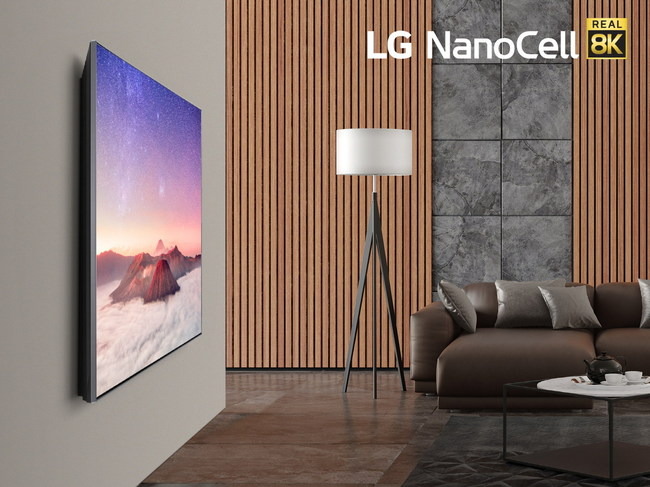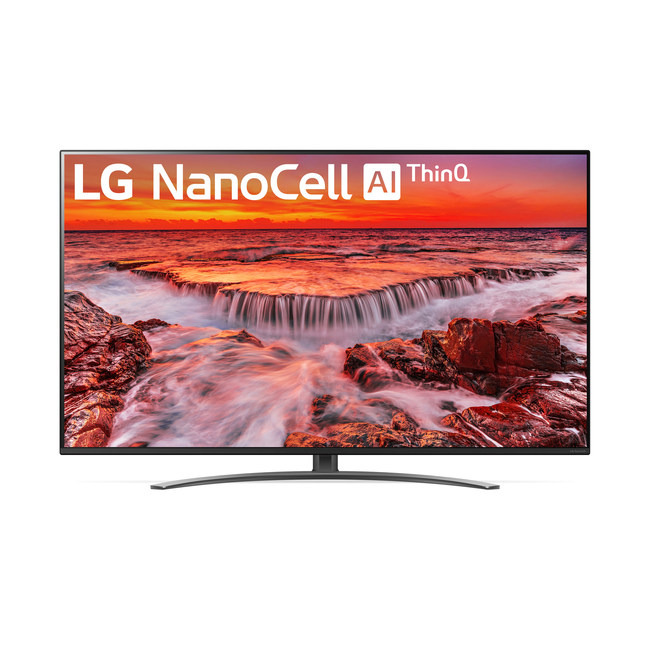LG starts rollout of 2020 NanoCell TV lineup with HomeKit & AirPlay 2
LG is now sharing pricing and availability information for its 2020 NanoCell 4K and 8K television lineup that include support for HomeKit as well as AirPlay 2.

LG's new NanoCell TV
The new TVs were first debuted at CES 2020 and feature sizes between 49 inches and 86 inches. NanoCell technology reproduces color by using a one-nanometer layer of particles that filter out impurities resulting in "natural, lifelike color" according to LG, which are more accurate even when viewed at wide angles.
Of importance to Apple users, these sets will support both AirPlay 2 and the HomeKit smart home platform. AirPlay 2 allows users to cast both audio and video to the TV from their iPhone, iPad, or Mac and audio from HomePod as well. With HomeKit, users can control the TV with Siri, as well as with the Remote app and in the Home app on their iPhone and iPad.
HomeKit audio devices can also be included in automation scenes such as a "goodnight" scene turning off the TV while also turning off the lights and closing the blinds. Another use case is your "workout" scene could start playing your high-intensity workout playlist on the TV.
Aside from HomeKit and AirPlay 2, the webOS-based TVs also support Google Assistant and Amazon Alexa, the standalone Apple TV app, Disney+, Netflix, LG Channels, and Movies Anywhere.
The flagship model of the lineup is the 86-inch 4K 86NANO90UNA TV, which is available now for $3299.
Other than the Nano81 series, all of LG's 2020 NanoCell 4K TVs are powered by the Alpha 7 Gen 3 Intelligent Processor and the Nano99 8K models use the Alpha 9 gen 3 AI processor 8K. All support Dolby Vision as well as Dolby Atmos except for the Nano81 line which is limited to HDR 10 and HLG.
On the 8K side, LG's 2020 8K NanoCell TVs exceed the requirements put forth by the Consumer Technology Association for 8K sets which allows it to be among the first to use the CTA 8K Ultra HD markings.
Select models are available now. Most others will roll out later in April and in May, with the 75-inch 75NANO85UNA landing this September.

LG's new NanoCell TV
The new TVs were first debuted at CES 2020 and feature sizes between 49 inches and 86 inches. NanoCell technology reproduces color by using a one-nanometer layer of particles that filter out impurities resulting in "natural, lifelike color" according to LG, which are more accurate even when viewed at wide angles.
Of importance to Apple users, these sets will support both AirPlay 2 and the HomeKit smart home platform. AirPlay 2 allows users to cast both audio and video to the TV from their iPhone, iPad, or Mac and audio from HomePod as well. With HomeKit, users can control the TV with Siri, as well as with the Remote app and in the Home app on their iPhone and iPad.
HomeKit audio devices can also be included in automation scenes such as a "goodnight" scene turning off the TV while also turning off the lights and closing the blinds. Another use case is your "workout" scene could start playing your high-intensity workout playlist on the TV.
Aside from HomeKit and AirPlay 2, the webOS-based TVs also support Google Assistant and Amazon Alexa, the standalone Apple TV app, Disney+, Netflix, LG Channels, and Movies Anywhere.
The flagship model of the lineup is the 86-inch 4K 86NANO90UNA TV, which is available now for $3299.
Other than the Nano81 series, all of LG's 2020 NanoCell 4K TVs are powered by the Alpha 7 Gen 3 Intelligent Processor and the Nano99 8K models use the Alpha 9 gen 3 AI processor 8K. All support Dolby Vision as well as Dolby Atmos except for the Nano81 line which is limited to HDR 10 and HLG.
On the 8K side, LG's 2020 8K NanoCell TVs exceed the requirements put forth by the Consumer Technology Association for 8K sets which allows it to be among the first to use the CTA 8K Ultra HD markings.
Select models are available now. Most others will roll out later in April and in May, with the 75-inch 75NANO85UNA landing this September.


Comments
Connect an Apple TV instead and stop the TV manufacturers and Google from tracking your every click of the remote, movement in your house and device on your network.
OK, maybe not here in the USA, but definitely in Japan and certain other countries in Southeast Asia (like South Korea, Taiwan).
The USA is a bit behind on this type of technology as well as the infrastructure to support it.
Hell, the Japanese were using their cellphones as NFC contactless transit passes in 2005.
I'll guess that you've never read the associated privacy policy?
Apple TV tracks where you are, what you watch, for how long, and when. They also target ads based on your use of the devices and services, and identified by your Advertising ID Number. User data may be "anonymized" and shared with service providers and advertisers. Other Apple services do much of the same. If associating your data with a profile concerns you turn those permissions off in settings because the default is on.
https://support.apple.com/en-us/HT208511
If you don't know where the appropriate settings are, perhaps not even aware of them, a web search will assist in finding them. If you're still unsure if you opted out of all of it just ask and I'll point you in the right direction, but I think all of us are capable of discovering it for ourselves once we're made aware. I think many of us would have assumed Apple doesn't track their users and just never looked.
Plasma and OLED both met there criteria, because like phosphors in a CRT, the individual units are illuminating, unlike backlit LCD. This is why I haven’t replaced my Panasonic plasma with LCD.
Gosh, remember what we paid for those plasma sets back in the day when we got 'em? Really good HDTV's are so inexpensive anymore.